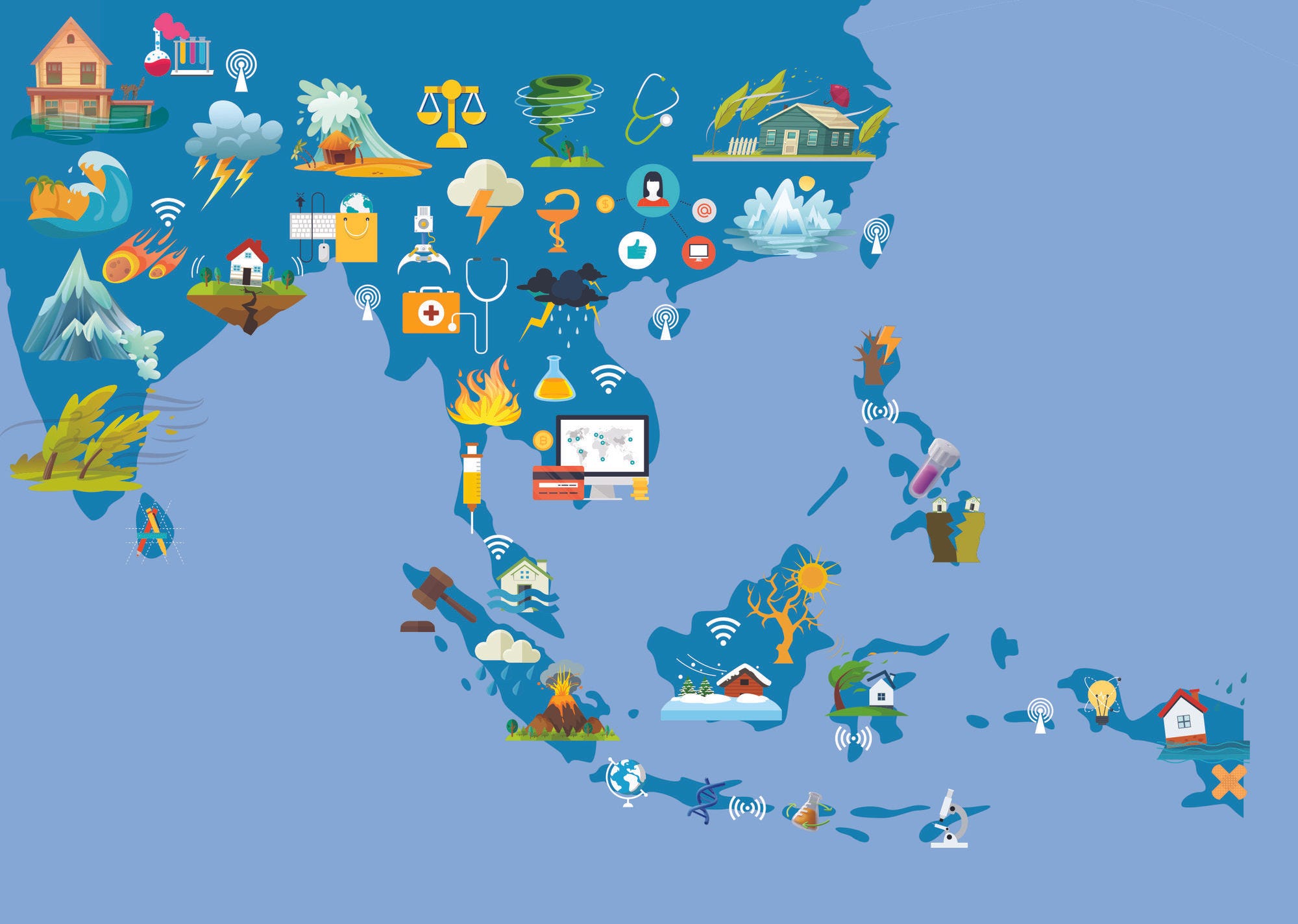Revenue Statistics in Asia and the Pacific is jointly produced by the Organisation for Economic Co-operation and Development (OECD)’s Centre for Tax Policy and Administration (CTP) and the OECD Development Centre (DEV) with the co-operation of the Asian Development Bank (ADB), the Pacific Island Tax Administrators Association (PITAA), and the Pacific Community (SPC) and financial support from the governments of Ireland, Japan, Luxembourg, Norway, Sweden, Switzerland and the United Kingdom. This edition includes a special feature on the emerging challenges for the Asia-Pacific region in the COVID-19 era and ways to address them. It compiles comparable tax revenue statistics for Australia, Bhutan, People’s Republic of China, Cook Islands, Fiji, Indonesia, Japan, Kazakhstan, Korea, Lao People’s Democratic Republic, Malaysia, the Maldives, Mongolia, Nauru, New Zealand, Papua New Guinea, Philippines, Samoa, Singapore, Solomon Islands, Thailand, Tokelau, Vanuatu and Viet Nam ; and comparable non tax revenue statistics for Bhutan, the Cook Islands, Fiji, Kazakhstan, Lao People’s Democratic Republic, the Maldives, Mongolia, Nauru, Philippines, Papua New Guinea, Samoa, Singapore, Thailand, Tokelau, Vanuatu and Viet Nam. The model is the OECD Revenue Statistics database which is a fundamental reference, backed by a well established methodology, for OECD member countries. Extending the OECD methodology to Asian and Pacific economies enables comparisons about tax levels and tax structures on a consistent basis, both among Asian and Pacific economies and with OECD, Latin American and Caribbean and African averages.
Revenue Statistics in Asia and the Pacific 2021

Abstract
Executive Summary
Achieving the Sustainable Development Goals (SDGs) of the United Nations’ 2030 Agenda for Sustainable Development will require the mobilisation of increasing levels of public revenue. Revenue Statistics in Asia and the Pacific presents key indicators to track progress on domestic resource mobilisation and to inform tax policy and reform that could help fill the financing gap to fund the SDGs.
Revenue Statistics in Asia and the Pacific 2021 presents detailed, internationally comparable data on tax revenues for 24 Asian and Pacific economies: Australia, Bhutan, People’s Republic of China, the Cook Islands, Fiji, Indonesia, Japan, Kazakhstan, Korea, Lao People’s Democratic Republic, Malaysia, the Maldives, Mongolia, Nauru, New Zealand, Papua New Guinea, the Philippines, Samoa, Singapore, the Solomon Islands, Thailand, Tokelau, Vanuatu and Viet Nam.
Tax-to-GDP ratios in Asia and the Pacific
In 2019, the Asia-Pacific (24) average tax-to-GDP ratio was 21.0%, below the OECD and LAC averages, (33.8% and 22.9%, respectively) and higher than the Africa (30) average (16.6%, 2018 figure). Tax-to-GDP ratios in the 24 Asian and Pacific economies ranged from 10.3% in Bhutan to 48.2% in Nauru. Most Asian countries in this report had a tax-to-GDP ratio below the Asia-Pacific (24) average, except for Japan (32.0%, 2018 figure), Korea (27.4%), Mongolia (24.2%) and China (22.1%). By contrast, only four of the ten Pacific economies had a tax-to-GDP ratio below the Asia-Pacific (24) average, including Papua New Guinea (12.4%), Vanuatu (17.1%), Tokelau (19.2%) and the Solomon Islands (20.4%).
Between 2018 and 2019, tax-to-GDP ratios decreased in over two-thirds (15) of the 22 economies for which 2019 data are available. They decreased by more than one percentage point (p.p.) in six economies: Bhutan, China (exclusive of social security contributions), the Cook Islands, Fiji, Samoa, and the Solomon Islands. Two of the three largest decreases, in the Cook Islands and Bhutan, were influenced by the inclusion of part of the 2020 calendar year in the 2019 fiscal year: the decrease of 3.0 p.p. in the Cook Islands was driven by lower income tax revenue due to the collapse in tourism as a result of COVID-19 travel restrictions; and in Bhutan a decline in revenue from taxes on goods and services during the COVID-19 pandemic contributed to the 2.3 p.p. decrease. The largest decrease, of 3.6 p.p. in the Solomon Islands, was due to lower economic activity during the national elections and a decline in logging exports.
Of the seven economies where tax-to-GDP ratios increased in 2019, the largest increases were in Nauru and Tokelau (12.9 p.p. and 1.2 p.p., respectively). In Nauru, tax-to-GDP ratios increased following increases in income tax rates for employees and service providers of the Regional Processing Centre. The increase in the tax-to-GDP ratio in Tokelau was driven by higher income taxes following general increases in salaries. Increases in the remaining five economies were smaller than one percentage point.
Over a longer timeframe, fourteen of the 24 Asian and Pacific economies have increased their tax-to-GDP ratios. The highest increases over the last decade were observed in Korea (5.0 p.p.), Japan (5.5 p.p., 2010 to 2018), Samoa (6.2 p.p.), the Maldives (9.6 p.p.) and Nauru (39.8 p.p., since 2014). Across the same period, Viet Nam, Papua New Guinea and Kazakhstan experienced the largest decreases in their tax-to-GDP ratios (4.1 p.p., 4.5 p.p. and 7.1 p.p., respectively), driven in all three countries by decreases in corporate income tax (CIT) revenues, which were negatively affected by lower resource prices in Papua New Guinea and Kazakhstan and by several decreases of the standard CIT rate in Viet Nam.
Tax structures in Asia and the Pacific
On average, taxes on goods and services were the main source of tax revenues in the Asia-Pacific region in 2019, accounting on average for 49.8% of total tax revenues, similar to the Africa (30) and the LAC averages (51.9%, 2018 figure and 50.3%, respectively) and higher than the OECD (32.7%, 2018 figure). However, within this category, the average share of value-added taxes in total revenues was lower in Asia-Pacific (24) (22.8%) than in Africa (30) and LAC (29.7%, 2018 figure and 28.0%, respectively) and similar to the OECD average (20.4%, 2018 figure).
Revenues from personal income taxes (PIT) accounted for an average of 17.0% of total tax revenues in Asia-Pacific, similar to the Africa (30) average of 17.5% (2018 figure), above the LAC average (9.1%) and below the OECD average (23.5%, 2018 figure). Corporate income tax revenues accounted for a larger share of total tax revenues in the Asian-Pacific region, on average, at 20.1%, similar to the Africa (30) average (19.2%, 2018 figure) and above the shares in LAC (15.5%) and the OECD (10.0%, 2018 figure). In Pacific economies, PIT accounted for a larger share of total taxation than CIT (with the exception of Fiji); whereas the CIT share was higher than the PIT share in Asian countries, except in Korea and Japan.
Social security contributions (SSCs) played a small role in revenues for most Asian and Pacific economies, at 6.6% of total revenues. None of the Pacific economies levy SSCs and most of the Asian countries in the publication have very low SSCs. However, four Asian countries derive more than 15% of total tax revenues from SSCs: Japan (40.2%, 2018 figure); China (27.5%), Korea (26.7%) and Mongolia (19.8%).
Non-tax revenues in selected economies
This publication also includes data on non-tax revenues for sixteen economies (Bhutan, the Cook Islands, Fiji, Kazakhstan, Lao PDR, the Maldives, Mongolia, Nauru, Papua New Guinea, the Philippines, Samoa, Singapore, Thailand, Tokelau, Vanuatu and Viet Nam).
In 2019, non-tax revenues were greater than 10% of GDP in Samoa (11.0%), the Cook Islands (15.3%), Bhutan (19.2%), Vanuatu (24.2%), Nauru (85.2%) and Tokelau (220.1%). Grants were an important source of revenue in 2019 in seven economies (Bhutan, the Cook Islands, Lao PDR, Papua New Guinea, Samoa, Tokelau, and Vanuatu), exceeding 30% of total non-tax revenues. Property-related income accounted for the largest share of non-tax revenues in Singapore (85.7%), Kazakhstan (78.1%), Nauru (53.8%), Thailand (52.6%) and Tokelau (51.2%), and also contributed more than 40% in the Philippines, Fiji and Mongolia.
Special feature: Emerging challenges for the region in the COVID-19 era
A special feature sheds light on potential challenges that Asian and Pacific economies could face during the recovery from COVID-19, particularly in managing government finances in a sustainable way. The chapter explores strategies to address these challenges and to enhance domestic resource mobilisation, such as the creation of medium term revenue strategies, digitalisation of tax administrations and active participation in international tax initiatives. The recently launched ADB Asia-Pacific Tax Hub could serve as a support mechanism for countries to develop and sustain healthy government finances.








